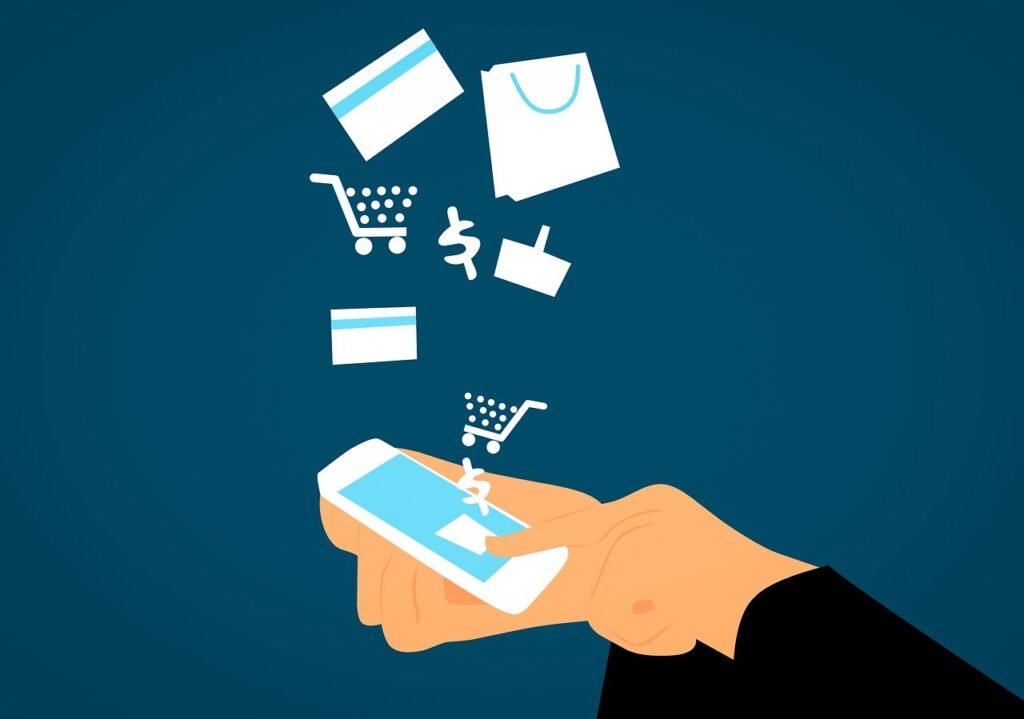- 1. How Many Consumers Discover New Products on Social Media?
- 2. Do Influencers Impact Shopping Decisions?
- 3. Has Social Media Shopping Increased During the Pandemic?
- 4. How Popular is Social Media Shopping Among Gen Z?
- 5. How Do Consumers Use Social Media for Purchase Decisions?
- 6. How Effective is Instagram for Product Discovery?
- 7. Do Social Media Users Follow Brands?
- 8. Are Consumers Likely to Buy from Brands They Follow on Social Media?
- 9. How Do Consumers Use Social Media for Product Research?
- 10. Would Consumers Purchase Directly Within Social Media Platforms?
- 11. Are Social Media Referrals Effective for Driving Purchases?
- 12. Do Marketers Find Social Media Shopping Effective?
- 13. Are Marketers Increasing Their Budgets for Social Media Shopping?
- 14. How Are Small Businesses Utilizing Social Media for Sales?
- 15. How Do Social Media Reviews Influence Online Shopping?
- 16. Do Social Media Users Prefer In-App Purchases?
- 17. Does Visual Content on Social Media Drive Engagement?
- 18. How Popular Are Live Streams for Shopping?
- 19. How Does Video Content Influence Purchasing Decisions?
- 20. How Much Do Consumers Trust Online Reviews?
- 21. How Do Stories Impact Product Interest?
- 22. How Effective Are Instagram Stories for Driving Sales?
- 23. Are Brands Increasing Their Use of Instagram Shopping?
- 24. Do Tweets from Influencers Drive Purchases?
- 25. How Do Consumers Discover New Brands on Social Media?
- 26. How Popular is Pinterest for Finding Products?
- 27. How Influential is Facebook in Shopping Decisions?
- 28. Do Social Media Ads Influence Purchasing Decisions?
- 29. How Do Millennials Shop on Social Media?
- 30. How Does User-Generated Content Impact Purchasing Decisions?
- Conclusion
Social media has revolutionized the way we connect, communicate, and consume content. But its impact goes beyond social interactions and entertainment. Today, social media is a powerful platform for shopping. With the rise of social media shopping, consumers are discovering, researching, and purchasing products directly within their favorite apps. This shift has opened up new opportunities for businesses to reach their target audience and drive sales. In this article, we will explore the key statistics and trends that highlight the growing influence of social media shopping.
1. How Many Consumers Discover New Products on Social Media?

A significant number of consumers are finding new products through social media platforms. 78% of consumers say they’ve discovered new products on social media. This statistic underscores the importance of having a strong social media presence for brands.
By showcasing your products on platforms like Instagram, Facebook, and Pinterest, you can reach a wider audience and attract potential customers. Visual content, such as photos and videos, plays a crucial role in grabbing attention and sparking interest in new products.
2. Do Influencers Impact Shopping Decisions?
Influencers have a powerful impact on shopping decisions. 67% of shoppers have made a purchase based on recommendations from social media influencers. Influencers build trust with their followers, and their endorsements can significantly boost a product’s credibility.
For businesses, collaborating with influencers can be a strategic way to tap into their audience and drive sales. When choosing influencers, ensure they align with your brand values and have a genuine connection with their followers.
3. Has Social Media Shopping Increased During the Pandemic?
The pandemic has accelerated the trend of social media shopping. 44% of users reported increased social media shopping during the pandemic. With lockdowns and restrictions limiting in-person shopping, consumers turned to social media for their retail needs.
This trend is likely to continue as people have become more accustomed to the convenience and ease of shopping through social media platforms. Businesses should leverage this shift by optimizing their social media shops and making the online shopping experience as seamless as possible.
4. How Popular is Social Media Shopping Among Gen Z?
Gen Z is a driving force behind the rise of social media shopping. 87% of Gen Z shoppers use social media for shopping inspiration. This generation, born into the digital age, naturally turns to social media for discovering and researching products.
To capture the attention of Gen Z, businesses should focus on creating engaging and visually appealing content. Utilizing features like Instagram Stories, TikTok videos, and Snapchat filters can help brands connect with this tech-savvy audience.
5. How Do Consumers Use Social Media for Purchase Decisions?
Social media plays a crucial role in guiding purchase decisions. 74% of consumers rely on social networks to guide purchase decisions. Whether it’s reading reviews, watching product demos, or seeing how products are used in real life, social media provides valuable information that influences buying choices.
Brands should actively engage with their audience by responding to comments, sharing user-generated content, and providing transparent information about their products.
6. How Effective is Instagram for Product Discovery?
Instagram is a powerful platform for product discovery. 60% of Instagram users discover new products on the platform. With features like Shopping Tags, Shoppable Posts, and Instagram Shops, users can seamlessly browse and purchase products without leaving the app.
For businesses, leveraging Instagram’s visual nature and shopping features can drive product discovery and boost sales. Creating high-quality, eye-catching content is key to standing out and capturing the interest of potential customers.
7. Do Social Media Users Follow Brands?
A majority of social media users follow brands. 80% of social media users follow at least one brand on social media. This presents a significant opportunity for businesses to build a loyal following and engage with their audience.
By sharing valuable content, exclusive offers, and behind-the-scenes glimpses, brands can create a strong connection with their followers. Regular interaction and engagement can turn followers into loyal customers who advocate for your brand.
8. Are Consumers Likely to Buy from Brands They Follow on Social Media?
Following a brand on social media increases the likelihood of making a purchase. 53% of consumers say they are likely to buy from brands they follow on social media. This statistic highlights the importance of maintaining an active and engaging presence on social media.
By consistently providing value and building trust with your followers, you can convert them into customers. Offer exclusive deals, announce new product launches, and run special promotions to encourage purchases from your social media followers.
9. How Do Consumers Use Social Media for Product Research?
Social media is a valuable tool for product research. 45% of users use social media to research products before purchasing. Consumers turn to platforms like Facebook, Instagram, and Pinterest to gather information, read reviews, and compare products.
For businesses, it’s essential to provide detailed and accurate product information on social media. Encourage satisfied customers to leave reviews and share their experiences to build credibility and assist potential buyers in their decision-making process.
10. Would Consumers Purchase Directly Within Social Media Platforms?
 seamless in-app shopping experiences is appealing to many users. ” class=”wp-image-53921″/>
seamless in-app shopping experiences is appealing to many users. ” class=”wp-image-53921″/>A growing number of consumers are open to purchasing directly within social media platforms. 30% of online shoppers say they would make purchases directly within social media platforms. The convenience of seamless in-app shopping experiences is appealing to many users.
Businesses should capitalize on this trend by setting up social media shops and enabling features that allow direct purchases. Simplifying the checkout process and providing secure payment options can enhance the shopping experience and increase conversion rates.
11. Are Social Media Referrals Effective for Driving Purchases?
Social media referrals are highly effective in driving purchases. 71% of consumers are more likely to purchase based on social media referrals. Word-of-mouth marketing has always been powerful, and social media amplifies this effect.
When users see their friends or trusted influencers recommending a product, they are more inclined to consider it. Brands should encourage their customers to share their purchases and experiences on social media, perhaps by offering incentives such as discounts or rewards for referrals.
12. Do Marketers Find Social Media Shopping Effective?
Marketers recognize the value of social media shopping for their business. 89% of marketers find social media shopping effective for their business. Social media platforms provide a direct line to consumers, enabling brands to reach and engage with their target audience in real-time.
For businesses, it’s crucial to integrate social media shopping strategies into their overall marketing plan. This includes optimizing social media profiles, creating shoppable content, and leveraging social media advertising to drive traffic and sales.
13. Are Marketers Increasing Their Budgets for Social Media Shopping?
There is a clear trend towards increasing investment in social media shopping. 72% of marketers plan to increase their social media shopping budgets in the next year.
This growth is driven by the proven effectiveness of social media shopping in driving sales and customer engagement. Businesses should allocate resources towards enhancing their social media presence, improving content quality, and utilizing paid advertising to maximize reach and impact.
14. How Are Small Businesses Utilizing Social Media for Sales?
Small businesses are increasingly turning to social media to sell products. 50% of small businesses sell products directly through social media. Social media platforms provide an accessible and cost-effective way for small businesses to reach a large audience.
For small business owners, setting up a social media shop is a strategic move to boost sales. Utilizing features like Facebook Shops and Instagram Shopping, small businesses can showcase their products and make it easy for customers to purchase directly.
15. How Do Social Media Reviews Influence Online Shopping?
Social media reviews significantly influence online shopping behavior. 68% of consumers are influenced by social media reviews when shopping online. Positive reviews and testimonials can build trust and credibility, encouraging potential customers to make a purchase.
Brands should actively seek out and showcase customer reviews on their social media profiles. Engaging with reviewers, whether by thanking them for positive feedback or addressing concerns in negative reviews, can demonstrate a commitment to customer satisfaction.

Related: Check out our free tools:

16. Do Social Media Users Prefer In-App Purchases?
A significant number of social media users prefer to make purchases without leaving the app. 54% of social media users prefer purchasing products directly within the app. This preference highlights the importance of providing a seamless in-app shopping experience.
Businesses should take advantage of native shopping features on platforms like Instagram and Facebook to streamline the purchasing process. Ensuring that the checkout process is quick, easy, and secure will enhance the user experience and drive sales.
17. Does Visual Content on Social Media Drive Engagement?
Visual content is a key driver of engagement on social media. 59% of consumers engage with visual content more than text content on social media. High-quality photos, videos, and graphics capture attention and can effectively convey product information.
For businesses, investing in professional visuals and leveraging features like Instagram Stories, Facebook Live, and Pinterest Pins can boost engagement and attract potential customers.
18. How Popular Are Live Streams for Shopping?
Live streaming is gaining popularity as a shopping tool. 35% of social media users have used live streams to shop. Live streams offer a dynamic and interactive way to showcase products, answer questions, and engage with the audience in real-time.
For businesses, hosting live shopping events can create a sense of urgency and excitement, driving immediate sales. It’s important to plan and promote live streams effectively to maximize attendance and impact.
19. How Does Video Content Influence Purchasing Decisions?
Video content plays a significant role in influencing purchasing decisions. 64% of consumers have watched a branded video on social media in the past month. Videos can provide detailed product demonstrations, customer testimonials, and behind-the-scenes looks that build trust and interest.
Brands should focus on creating engaging video content that highlights the benefits and features of their products. Sharing these videos across multiple social media platforms can extend reach and drive conversions.
20. How Much Do Consumers Trust Online Reviews?

Consumers place a high level of trust in online reviews. 88% of consumers trust online reviews as much as personal recommendations. This trust underscores the importance of maintaining a positive online reputation.
Businesses should encourage satisfied customers to leave reviews and actively manage their online presence. Addressing negative feedback professionally and constructively can help mitigate any potential damage to the brand’s reputation.
21. How Do Stories Impact Product Interest?
Stories are a powerful tool for generating product interest on social media. 62% of consumers say they become more interested in a product after seeing it in Stories.
Stories provide a quick and engaging way to showcase products, share updates, and interact with followers. For businesses, using Stories to highlight new arrivals, special promotions, and user-generated content can drive interest and encourage purchases.
22. How Effective Are Instagram Stories for Driving Sales?
Instagram Stories are highly effective for driving sales. 48% of social media users made a purchase after seeing a product in an Instagram Story. This feature allows brands to showcase products in a visually engaging and temporary format, creating a sense of urgency.
For businesses, utilizing Instagram Stories to highlight products, share limited-time offers, and provide direct links to purchase can significantly boost sales. Incorporating interactive elements like polls, questions, and swipe-up links can further engage viewers and encourage them to take action.
23. Are Brands Increasing Their Use of Instagram Shopping?
Yes, many brands are increasingly using Instagram Shopping to boost their sales. 49% of brands plan to increase their use of Instagram Shopping. This feature allows businesses to create a seamless shopping experience directly within the app, making it easier for users to discover and purchase products.
For brands, it’s important to optimize their Instagram Shop by categorizing products, providing detailed descriptions, and using high-quality images. Regularly updating the shop with new arrivals and promotions can keep the audience engaged and drive repeat purchases.
24. Do Tweets from Influencers Drive Purchases?
Tweets from influencers can significantly impact purchasing decisions. 40% of Twitter users reported buying something because of a tweet from an influencer. Influencers on Twitter often share product recommendations, reviews, and personal experiences, which can sway their followers’ buying choices.
For businesses, collaborating with influencers who have a strong Twitter presence can help increase brand visibility and drive sales. It’s crucial to ensure that the influencer’s audience aligns with your target market to maximize the impact of the collaboration.
25. How Do Consumers Discover New Brands on Social Media?
Social media is a major platform for brand discovery. 55% of consumers learn about new brands on social media. Platforms like Instagram, Facebook, and TikTok are filled with content that introduces users to new products and brands.
For businesses, creating engaging content that stands out is key to attracting attention. Utilizing hashtags, collaborating with influencers, and running targeted ads can help increase brand visibility and reach new potential customers.
26. How Popular is Pinterest for Finding Products?

Pinterest is a popular platform for discovering products. 70% of consumers use Pinterest to find new and interesting products. The platform’s visual nature and search functionality make it ideal for exploring new items.
For businesses, creating visually appealing Pins and optimizing them with relevant keywords can drive traffic and sales. Pinterest Boards can also be used to curate collections of products, making it easier for users to discover and engage with your offerings.
27. How Influential is Facebook in Shopping Decisions?
Facebook remains a significant influence on shopping decisions. 52% of users report that Facebook influences their online and offline purchases. With its large user base and diverse content formats, Facebook offers multiple ways to engage with consumers.
For businesses, maintaining an active presence on Facebook, sharing valuable content, and leveraging Facebook Ads can help drive sales. Engaging with customers through comments, messages, and reviews can also build trust and loyalty.
28. Do Social Media Ads Influence Purchasing Decisions?
Social media ads are highly influential in purchasing decisions. 58% of shoppers agree that social media ads influence their purchasing decisions. Ads that are well-targeted and visually appealing can capture users’ attention and encourage them to explore further.
For businesses, investing in social media advertising can provide a significant return on investment. It’s important to regularly monitor and optimize ad campaigns to ensure they resonate with the target audience and drive desired actions.
29. How Do Millennials Shop on Social Media?
Millennials are active social media shoppers. 47% of millennials have purchased products via social media. This generation values convenience and often turns to social media for shopping inspiration and transactions.
For businesses targeting millennials, creating a seamless and engaging shopping experience on social media is crucial. Incorporating user-generated content, interactive features, and personalized recommendations can enhance the shopping journey and drive sales.
30. How Does User-Generated Content Impact Purchasing Decisions?
User-generated content (UGC) has a strong impact on purchasing decisions. 79% of people say user-generated content highly impacts their purchasing decisions. UGC, such as customer photos, reviews, and testimonials, provides social proof and builds trust.
For businesses, encouraging customers to share their experiences and featuring UGC on social media can enhance credibility and influence potential buyers. Creating campaigns that incentivize customers to generate content can also boost engagement and drive sales.
Conclusion
The rise of social media shopping is transforming the retail landscape. With a significant number of consumers discovering, researching, and purchasing products directly through social media platforms, businesses have a unique opportunity to reach and engage with their audience in new ways. By leveraging key statistics and trends, brands can strategically optimize their social media presence, create engaging content, and drive sales. The future of shopping is social, and businesses that embrace this trend will be well-positioned for success.
READ NEXT:
- How to Use Kontentino: An Explainer
- How to Use VWO: An Explainer
- How to Use Postcron: An Explainer
- How to Use Sked Social: An Explainer
- How to Use Publer: An Explainer






















Comments are closed.